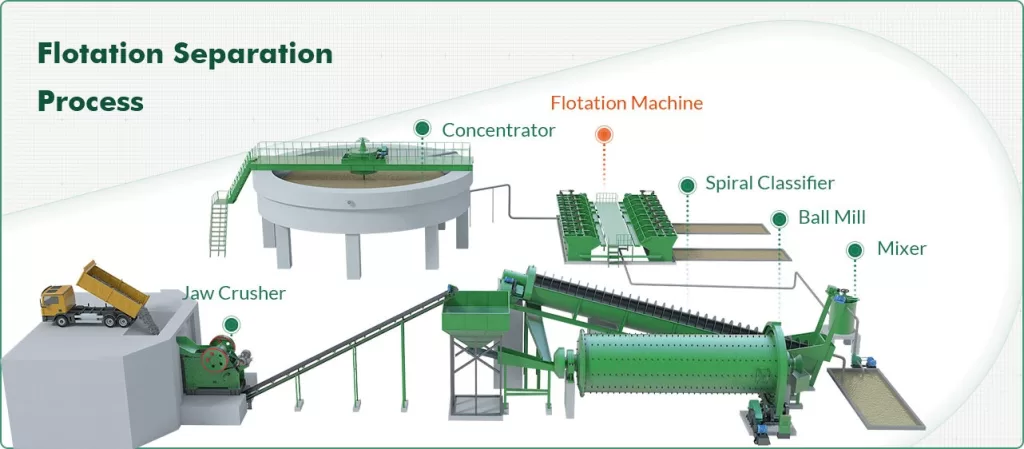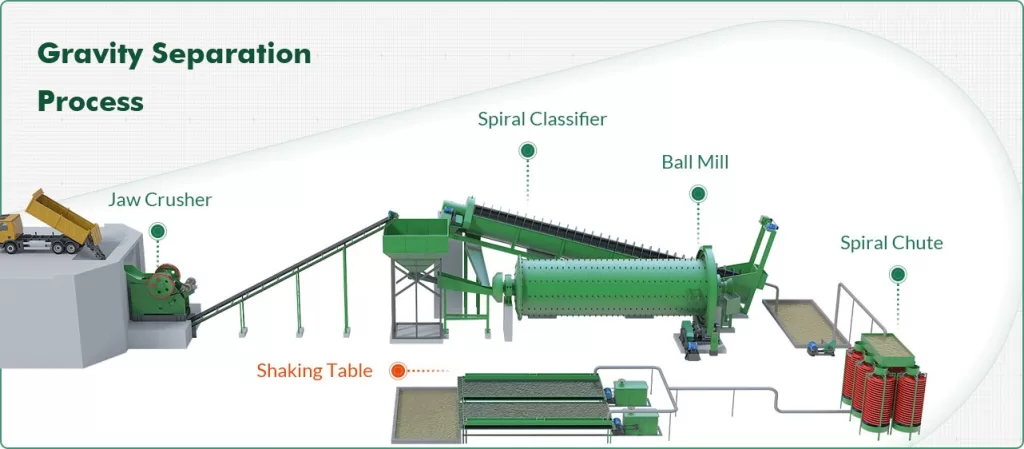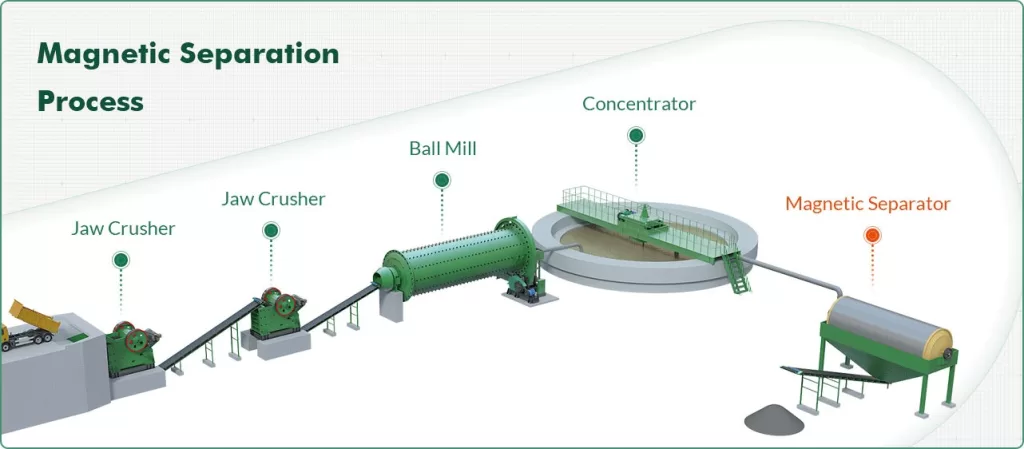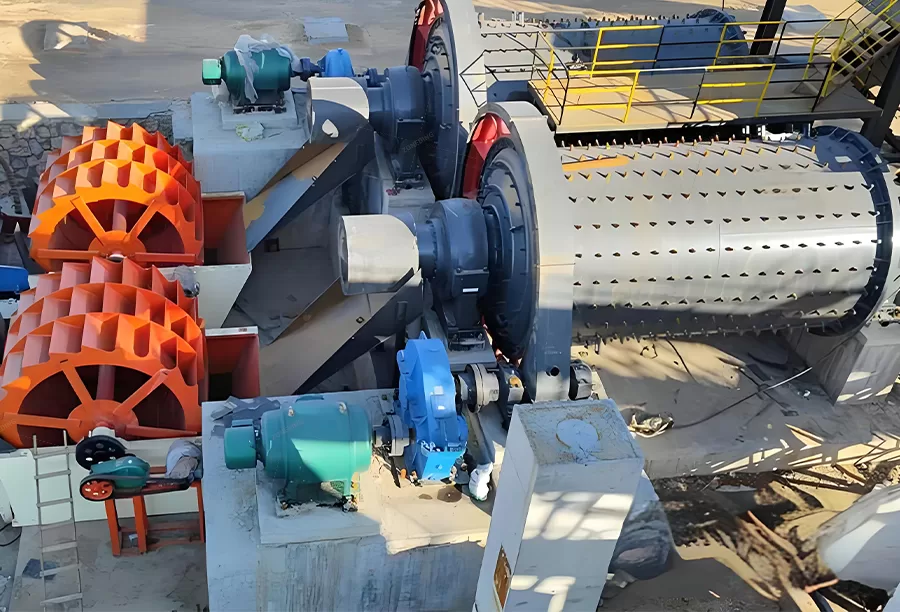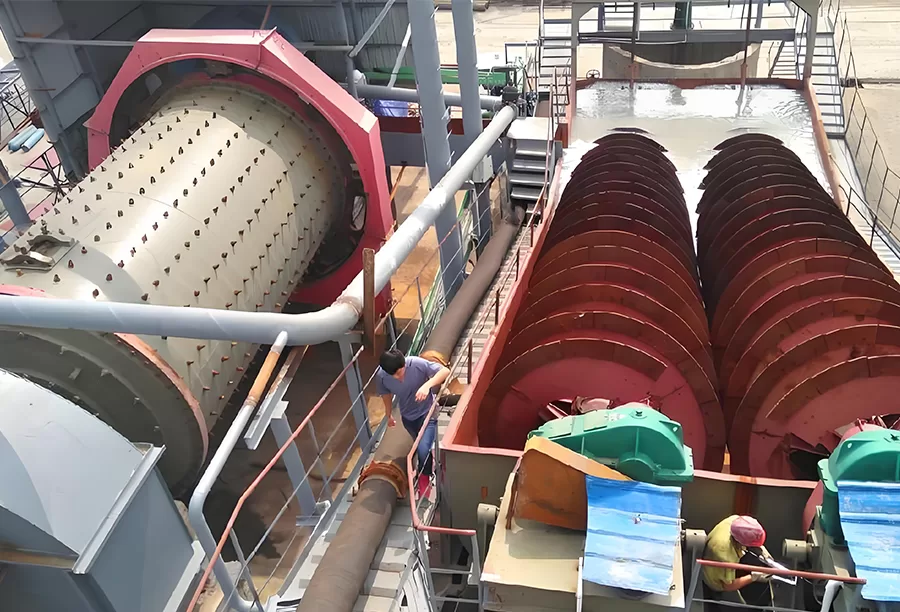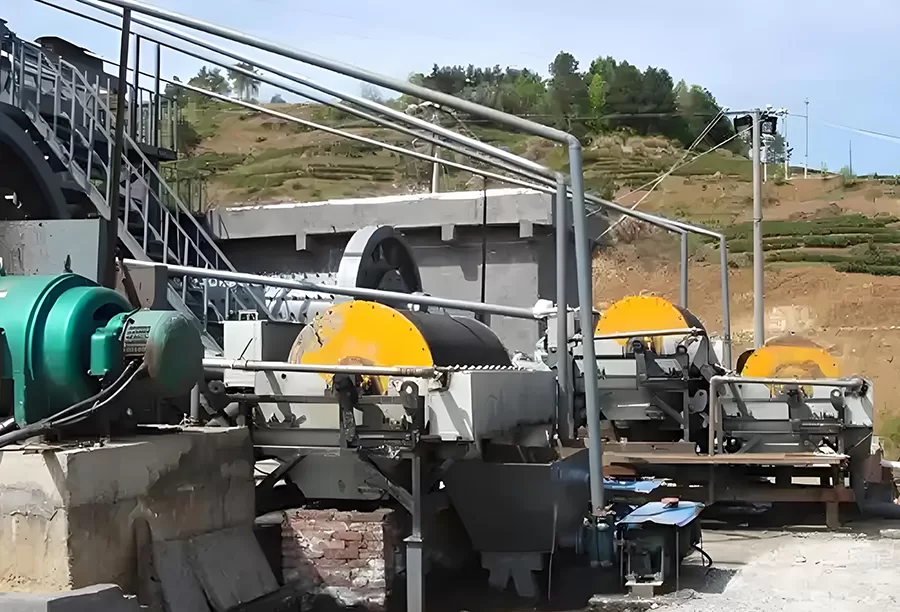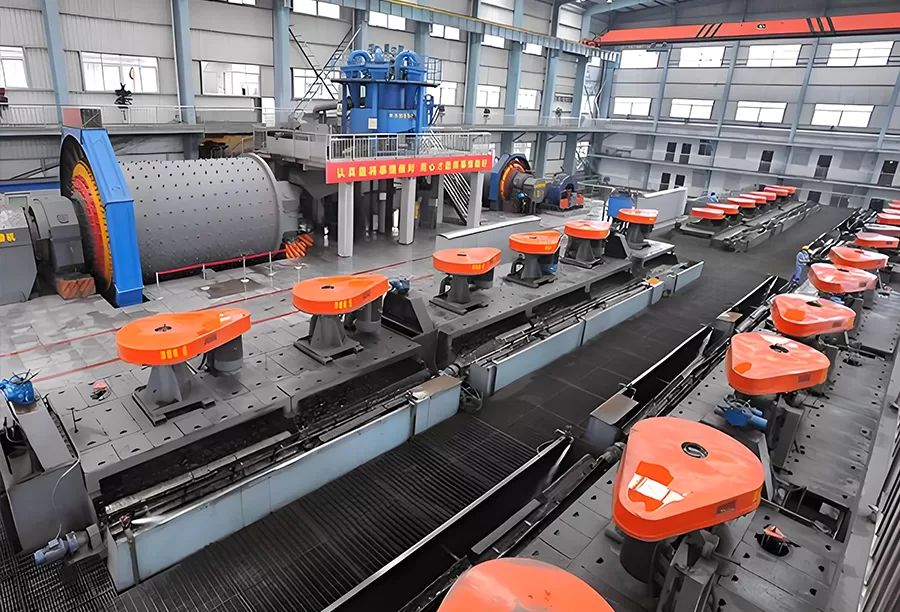ZONEDING is a world-leading mineral processing equipment supplier, dedicated to providing customers with efficient and sustainable mineral processing solutions. We can process most minerals and meet the extensive demands of metal ores, non-metal ores and other materials. With over 20 years of industry experience, we are committed to helping you design the best mineral processing plants, offering customized services and comprehensive support.
Mineral Processing Equipment: For which minerals?
ZONEDING's mineral processing equipment is designed to be versatile, efficiently recovering and processing a wide variety of minerals and materials, ensuring optimal results for clients across different sectors. Our processing capabilities cover the following categories:
- Metallic Ores:
Gold ore, hematite, magnetite, copper ore, chromite, lithium ore, manganese ore, bauxite, galena, tungsten ore, tin ore, nickel ore, molybdenum ore, cobalt ore, etc.
- Non-Metallic Ores:
Limestone, dolomite, barite, apatite, graphite, wollastonite, marble, garnet, fluorite, feldspar, clay, talc, etc.
No matter which mineral you need to process, ZONEDING can provide professional equipment and solutions to optimize recovery rates and improve operational efficiency.
Mineral Testing: Enhancing Ore Grade and Concentration
Before mining and processing gold, lithium, or other rocks, ZONEDING offers free mineral testing services. Our team of experts quickly identifies the characteristics of your ore through testing, helping you maximize ore grade and concentration. Based on the test results, we will design the optimal processing plan for you, ensuring your project starts with a solid foundation for efficiency.
What are the main types of mineral processing equipment?
The mineral processing equipment after crushing of ores includes grinding, classification, gravity separation, flotation, magnetic separation, dewatering and conveying equipment, which are used to separate and concentrate useful minerals from ores.
1. Grinding Equipment
Grinding equipment is the key equipment for grinding materials like iron ore after crushing process. It can reduce the particle size by dry or wet grinding.
- Applicable materials: metallic ores, non-metallic ores, ceramics, glass and other non-flammable and non-explosive materials.
- Grinding type: Dry grinding and wet grinding
- Feed size: <25 mm
- Output size: 0.074–0.89 mm (20–200 mesh)
- Loading capacity: 1.1–208 tons/hour
- It prevents iron pollution and is especially suitable for grinding glass and ceramics.
- The grinding medium is ceramic grinding balls (white aluminum balls) with a diameter between 0.5–120 mm.
- Feeding capacity: 0.05–15 tons/time
- Particularly suitable for processing brittle, low-hardness materials, including various rare metal ores, gold ores, quartz, coal, construction waste, etc.
- Similar to a ball mill but uses steel rods for coarse grinding or as the first stage in two-stage grinding.
- The maximum feed size is 50 mm. The capacity reaches180 tons/hour, with an output size of 20–100 mesh (0.833–0.147 mm).
- Applicable Materials: metal minerals, non-metallic minerals, rare metals and other materialssuch as gold, silver, lead, zinc, molybdenum, iron, copper, antimony, tungsten, etc.
- Feeding Size: <25mm
- Discharging Size: 0.5-0.1mm
- Engine power:5.5-30kw
2. Screening and Classification Equipment
The screening/sizing machine can screen materials of different particle sizes. It has high screening efficiency and is not easy to get clogged.
- Applicable materials: Slag, coal gangue, quartz sand, topsoil, gravel aggregate, and other sticky materials.
- Feed size: 50–150 mm
- Capacity: 2 mm screen can process 4–35 t/h. 30 mm screen can process 16–175 t/h, suitable for large-scale production.
- Applicable materials: Iron ore, tin ore, tungsten ore, tantalum ore, niobium ore, and other small and heavy materials.
- Capacity: 15–48 t/h
- High frequency screen is short for high frequency vibrating screen. As the name suggests, high frequency vibrating screen is the equipment which uses high vibration frequency to screen materials.
- Chute Length:≤3000-14300mm, Screw Diameter:300-3000mm
- Classifying minerals and fine muds as well as desliming and dewatering.
- Type: Single spiral classifier and double spiral classifier
3. Mineral Separation Equipment
Mineral separation equipment uses various ore dressing methods to concentrate and grind minerals into fine powders:
• Magnetic separation: Separates magnetic minerals with or without water.
• Flotation separation: Using chemicals to remove impurities or extract minerals.
• Gravity separation: Separating minerals economically based on their specific gravity.
- Mainly used for dry and wet magnetic separation of iron ores, such as magnetite, hematite, ilmenite, chromite, pyrrhotite, roasted ore, coltan, etc.
- Also used for iron removal and purification from other minerals, such as manganese ore, rutile, quartz, feldspar, kaolin, coal, etc.
- Maximum feed size: 3 mm
- Capacity: 10–280 tons/hour
- More efficient than other beneficiation methods in processing fine-grained lean ores, and requires the addition of reagents.
- Almost all minerals can be floated, such as copper ore, gold ore, iron ore, lithium ore, lead-zinc ore, nickel ore, fluorite, molybdenum ore, barite, antimony ore, feldspar, phosphate ore, aluminum ore, quartz, etc.
- Production capacity calculated by slurry volume: 0.18–38 m³/min
- Effective cubage: 0.35–38 m³
- Capacity:0-2 T/H, Customizable
- Feeding Density:<25mm; According to Model
- Discharging Size:0-2 mm; According to Model
- Applied material:Gold shaker table is a gravity separator that separates gold, tin, tungsten, lead, manganese, tantalum, chrome, and other precious and nonferrous metals.
- Product Output:0.15-6t/h
- Feeding Size:0.3-0.02mm
- Applied material: iron ore, ilmenite ore, chromite ore, pyrite ore, zircon ore, rutile ore, monazite ore, tungsten ore, tin ore, tantalum ore, niobium ore and other materials with enough specific gravity difference
- Maximum feed size: ≤6-25mm
- Production capacity: 1.5-25t/h
- Materials:The mineral jig separator is widely used in gravity separation process of gold, diamond, coltan, lead-zinc, copper, tin, tungsten, titanium, manganese, tungsten ore, fluorspar ore, iron ore, chrome ore, and other mineral processing plant.
4. Equipment for Ore Concentration and Dewatering
The minerals and their tailings after the beneficiation method are concentrated and dehydrated to obtain the final concentrate product.
- Applied Material:Slime, waste water, waste slag, etc.
- Capacity:5.6-6250t/d
- High efficiency concentrator is suitable to dewater concentrate and tailings in concentrator plant. The high efficiency concentrator produced by our company is a machine for removing the water in the ore concentrate and the tailings in the ore beneficiation plant.
5. Auxiliary Equipment
- Ideal for mixing materials and reagents before mineral processing, particularly in flotation separation, and for blending ingredients in various chemical industries.
- Applicable materials: Quartz, gold ore, carbon black, hematite, limonite, molybdenum ore, gold ore, iron ore, etc. (concentration can reach 30%, particle size within 1mm)
- Effective cubage: 0.58–135.4 m³
- Rotate speed: 24.4–390 r/min
Customized Mineral Processing Plants
ZONEDING not only supplies high-quality mineral processing equipment, but also offers customers comprehensive mineral processing solutions, including:
Separation of desired minerals from unwanted minerals by chemicals, common is froth flotation. The core machine is a flotation machine. Applied material: feldspar, bauxite, manganese ore, phosphate ore, etc.
Gravity beneficiation is separating mineral according to the specific gravity of the material. Spiral chute, spiral classifier and shaking table are usually used. Applied material: gold ore, manganese ore, alluvial gold.
Separation using magnetic separator according to the magnetic difference of minerals. Applied material: magnetite, pyrrhotite, calcined ore, ilmenite, etc.
Our engineering team can design the most optimal beneficiation process based on your ore characteristics, processing capacity and process requirements, and provide corresponding equipment configuration plans.
More industry solutions
ZONEDING offers customized mineral processing plants for various minerals, ranging from gold to iron, from lithium to copper.
Services
ZONEDING offers you service support throughout the entire life cycle to ensure the smooth progress of your project:
- Project Consultation: Our professional team will provide you with detailed project feasibility analysis and investment suggestions.
- Customized Solution Design: Based on your specific requirements, ore characteristics, and site conditions, we will design the optimal beneficiation process and equipment configuration scheme.
- Equipment Manufacturing and Quality Assurance: Production is carried out strictly in accordance with international standards to ensure that each piece of equipment has outstanding performance and reliable quality.
- Installation, Commissioning, and Personnel Training: Experienced engineers will be dispatched to provide on-site guidance for installation and commissioning, and offer comprehensive equipment operation and maintenance training for your operators.
- Spare Parts Supply and After-sales Support: We provide fast and reliable original spare parts supply, as well as 7x24-hour after-sales technical support to ensure the continuous and stable operation of your equipment.
FAQs
Q: What is the main function of a mineral processing plant?
A: The main function of a mineral processing plant is to extract valuable minerals or metals from raw ore. It utilizes a series of processes, such as crushing, grinding, screening, gravity separation, magnetic separation, etc., to separate the valuable minerals from the gangue (waste minerals), thereby obtaining a high-grade concentrate product. These plants are designed to maximize efficiency and metal recovery.
Q: What are the key steps involved in mineral processing?
A: Mineral processing typically involves four main stages: first is comminution (crushing and grinding), to reduce the large ore pieces to a suitable particle size; then classification, separating particles based on size; next is concentration, using physical or chemical methods to enrich the target minerals; and finally dewatering, to separate the solid concentrate from water.
Q: What role does mineral processing play in the mining industry?
A: Mineral processing is a crucial link in mining operations. It transforms the mined, low-grade raw ore into a high-grade concentrate, providing suitable raw material for subsequent smelting or metal extraction. Efficient mineral processing is essential for the economic viability and resource utilization of the project, and needs to be completed on schedule and within budget.
Q: What does "particle size control" refer to in mineral processing?
A: In mineral processing, "particle size control" (or "sizing") refers to the process of separating mineral particles based on their size. A common method is screening, which involves passing the material through screens with specific aperture sizes, thereby achieving separation of different size fractions.
Q: How is the efficiency of a mineral processing plant evaluated?
A: A mineral processing plant is usually evaluated by calculating the "recovery rate". The recovery rate is the percentage obtained by dividing the mass of the useful mineral recovered in the final product by the mass of that mineral in the raw material entering the plant. This is a key indicator of how effectively the plant recovers useful minerals from the ore.

